We, as women, feel so excited when we are pregnant and so looking forward to meeting our new babies. Social media bombards us with beautiful pictures of happy moms with their beautiful new born babies. We might be a bit scared about the actual physical pain of birth, but we picture ourselves coming home with our gorgeous little ones, happy and in love. Ecstatic to have finally met the little human being that has been growing inside of us for 9 months.
But postpartum recovery is not always that picture perfect. The arrival of a new baby is a massive adjustment to our lives and the physical and emotional roller coaster that new moms go through is real. So what can you really expect with your postpartum recovery?!
Related: The Ultimate Postpartum Care Kit Checklist – all the Essentials you need for Recovery after Birth
The Physical Changes
Due to the hormones and strain of giving birth, the postpartum body goes through a variety of changes. Here’s what you can expect postpartum, from a physical point of view:
- Physical pain
- Postpartum bleeding
- A horrible saggy belly skin
- Hair loss
- Acne
- Night sweats
- Incontinence
Note that you might not experience all of these syntoms 🙂 Well, definitely the postpartum bleeding and, I can almost guarantee you, some physical pain.
Physical Pain
If you thought birth was painful, don’t think postpartum isn’t! Whether you had a vaginal birth or a c-section, you are most likely going to experience one or more of these symptoms.
- Mild cramping
- Pain from the stitches
- Hemorrhoids
- Sore nipples
- Engorged breasts / Blocked milk ducts
- Abdominal pain at c-section incision
My main recommendation is keeping up with the pain killers! You’ll be tired and emotional after giving birth, the last thing you want is be in discomfort because of the pain! You are already a hero because you just gave birth to another human being. Not taking painkillers won’t make you any less of a hero 🙂
Remember – pain management is much better than pain control.
I would also recommend using some postpartum compression shorts or legging to help with the back pain and to speed up recovery. These offer some targeted compression to your abdomen and pelvic floor area that could really be beneficial, plus they help keep postpartum pads into place.
Cramping

Mild tummy cramping is totally normal. This is due to the uterus contracting back to its original size and is also referred to as after birth contractions.
They usually last for two to three days after giving birth. I personally don’t really remember these. I think with everything that went on after giving birth, these cramps were so mild they went unnoticed! 🙂
If you do get more intense cramping, you can check out these 15 natural remedies for after birth contractions.
Pain from the stitches

You might end up with a few stitches if you had a tear or an episiotomy during a vaginal birth. You’ll be swollen and bruised down there for a while unfortunately, which can be quite painful. Peeing will also sting like hell!
I had a tear and ended up having a few stitches. Even though the birth itself wasn’t painful thanks to hypnobirthing (you can read my birth story here), the postpartum pain every time I had to go to the loo was quite annoying.
The duration of this pain depends on where the tear is exactly and how many stitches you got. It may take 2 to 4 weeks for the stitches to dissolve and for the pain to go away.
Tips to reduce the pain due to stitches:
- Try not to strain when you have a bowel movement.
- Use ice or Cooling Pads to reduce the swelling. This will also help if you have hemorrhoids.
- Use a Peri Bottle to squirt water on your vagina when you pee. This will dilute the pee making it less acid and less painful.
- Use a Peri Cleanse and a Peri Balm to sooth the area and keep it clean.
You should check out the Frida Upside Down Bottle and the Frida Hospital Bag Essential Kit. The kit includes: an upside down bottle, 4 disposable postpartum underwear, 4 pads, cooling pad liners, perineal healing foam, a toiletry bag, socks and a delivery gown. It could be a perfect addition to your hospital bag checklist and postpartum care kit checklist.
Hemorrhoids
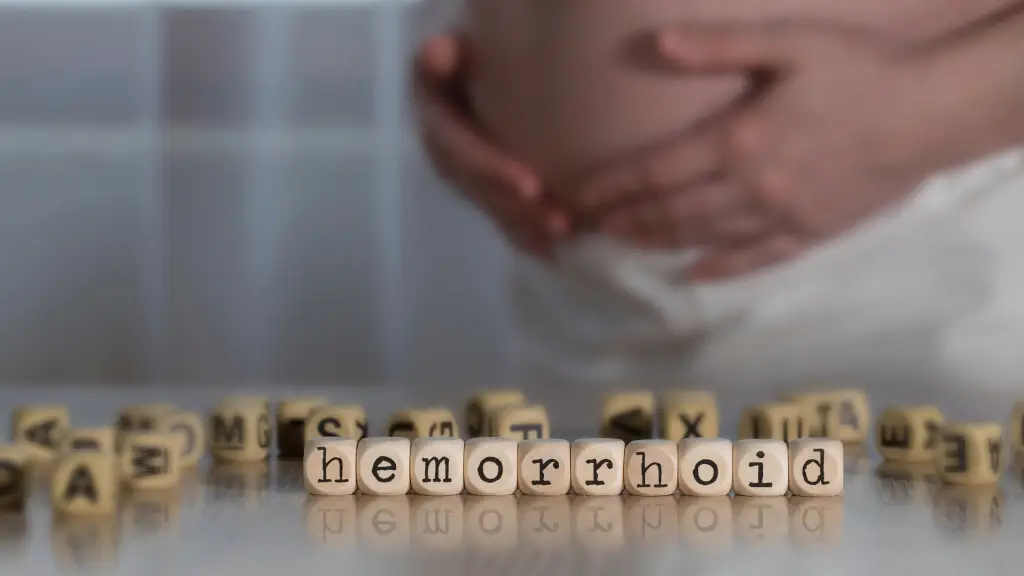
You may have already experienced hemorrhoids pain during pregnancy. Unfortunately the strain of giving birth vaginally doesn’t make it any better.
It can also take 2 to 3 days to have a bowel movement after birth. Constipation is quite normal due to your weakened ab muscles or use of pain medication. And, many mothers are scared to push too hard when having a bowel movement, in fear of ripping the stitches. All of these factors can make your hemorrhoids worse. Really try not to hold stools in!
When will hemorrhoids go away after giving birth? Well, that really depends on the degree they are at. It can take from a few days to a few weeks. Make sure to follow the tips below for a fast recovery. I have had hemorrhoids many times in my life and I absolutely hate the discomfort and pain they give. I find them to be incredibly debilitating, but the tips below always help a lot.
Tips to avoid or heal from hemorrhoids
- Don’t strain, don’t strain, don’t strain!
- Use ice or Cooling Pads. This will also help the swelling if you had stitches.
- Drink lots of water.
- Eat food with lots of fiber.
- Go for daily walks.
- Keep the area clean and use water wipes instead of toilet paper.
- Apply Vaseline before passing stools.
- Apply a Perineal Balm after every bowel movement.
- Take a stool softener if natural remedies don’t work.
Same as per the stitches, you should check out the Frida Hospital Bag Essential Kit. It could be a perfect addition to your hospital bag checklist or postpartum care kit checklist.
Sore nipples
If you are breastfeeding, you may experience sore nipples. I had sore nipples for about 8 weeks after giving birth and, man, it was sore! Some nights I could hardly fall asleep from the pain. I found this one to be quite frustrating to be honest. I always had the belief that instinct would prevail and I would be able to breastfeed normally without issues. So why the pain?
Sore nipples are due to the baby not latching properly to the breast. Usually because the mom is not feeding in an ideal position, or because she has a lot of milk and the newborn baby struggles with the high flow. If left untreated, nipples can become cracked and are at high risk of infection. This is very likely going to lead to mastitis, which you really want to avoid!
I was really lucky to complete a breastfeeding course and meet with a lactation consultant straight after birth. We had already met her when my wife had our first baby, so we booked an appointment as soon as my nipples started getting sore.
She gave me an antibiotic cream (safe for breastfeeding) to apply to the nipple after every feed, and she showed me different ways to breastfeed to encourage a good latch. This, coupled with the nipple cream, really helped. Though it still took a few weeks to go back to normal and not feel any pain!
Tips to heal from cracked and sore nipples
- Express a few drops of breastmilk to dab on your nipples. Breastmilk contains substances that aid healing and fight infection.
- Use a nipple cream. Lanolin ones are very good for sore nipples when breastfeeding and they are all natural. I personally used the Medela one and it provided quite a lot of relied.
- Keep the nipples clean as much as possible to avoid infection.
- Try different breastfeeding positions. Help your baby help you reshape the nipple so that it doesn’t hurt as much.
- Keep some thin menstrual pads in the freezer and apply them to the nipples when very sore.
- Use a nipple shield. This actually really helped me for a few weeks. Not all babies like a nipple shield, but if they do, it can bring so much relief and help the nipple heal! I used a Medela Contact Nipple Shield.
- See a lactation consultant, and make sure not too wait too long before you see one. If you need an antibiotic cream, it’s best to get one sooner rather than later.
- Enroll in a breastfeeding course: this can also really help you in finding a good breastfeeding position and latching to stop the pain and discomfort. I have compiled here a list of the best online breastfeeding courses (including FREE courses!)
Related: Sore Nipples While Breastfeeding?! 15 Tips that Saved Me!
Engorged Breasts & Blocked Milk Ducts
If you are breastfeeding, you may also experience engorged breasts. These can be very painful and, not to scare you off, but most mothers experience engorged breast within the first few weeks after birth.
Your breasts will feel heavy, hard, warm and so sensitive to the touch. It’s due to your body directing extra blood and fluids to your breasts to boost milk production. So they are not filling up with just milk!
I had an engorged breast about 4 weeks after Michaela was born. And it happened out of the blue during a Santa Parade near where I leave. I was doing fine. I mean, other than the bloody sore nipples!
We were sort of enjoying the parade, with Daniela (the older one) not been in the best mood, when all of a sudden the wind picked up and I needed to breastfeed Michaela. It was too windy, honestly. So I hurried back to the car with Michaela screaming in the pram. By the time I got to the car to feed her my breast was abnormous!
Engorgement turned into a blocked duct, which was quite sore to the touch. And the breast became quite red and itchy. It took me a few days of massaging and expressing some milk in the shower for the engorgement to finally go away.
Tips to avoid or reduce engorged breasts / blocked ducts
- Watch the baby and not the clock so much. If you are too late (like me) at feeding your baby, milk may accumulate excessively in your breasts and lead to engorgement.
- Apply cabbage leaves to the engorged breast(s)! Keep cleaned leaves in the fridge and apply them to the breasts when sore in between feeding. Don’t apply to the nipple: you can cut a hole to fit the nipple through. Apparently the leaf of the cabbage has powerful anti-inflammatory compounds that provide a remarkably effective treatment for relieving swelling or bruising in general.
- Use different breastfeeding positions. By changing position, the pressure of the sucking changes slightly and it may help dislodge the duct.
- Massage the area with the blocked duct when breastfeeding to help dislodge the duct.
- Express some milk in the shower (or wherever really 🙂 ) to release some pressure. I was too scared to express too much milk though, as the more milk comes out, the more your body receives signals to produce more milk!
- Loosen tight tops or bras.
- Keep the nipple area clean as breasts with blocked ducts are more prone to infections and mastitis! See a lactation consultant if the engorgement or blocked duct doesn’t go away.
Abdominal pain at c-section incision
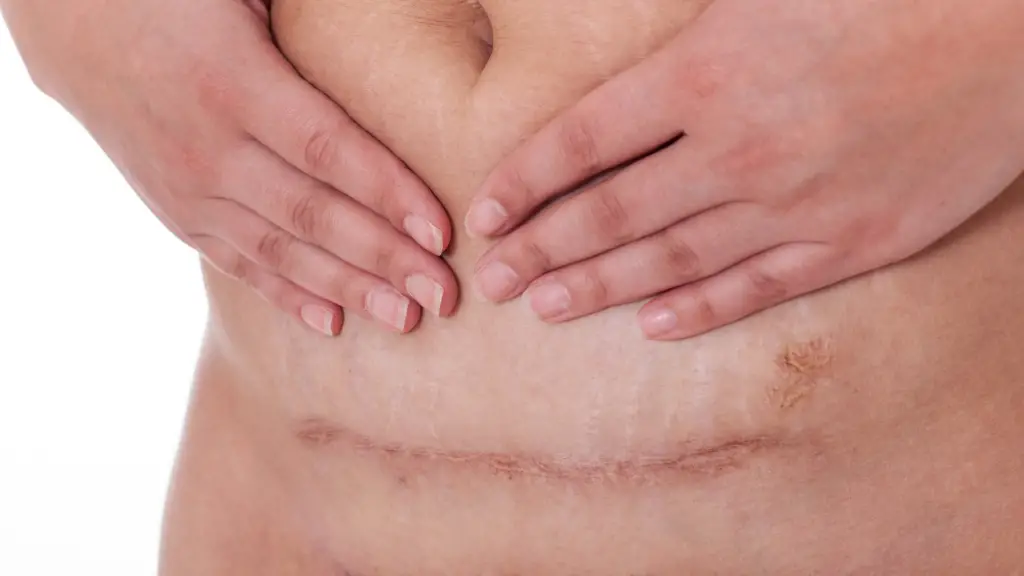
My wife had a c-section and, even though at hospital they try and get you up and walking around straight away, it is still a major surgery with a relatively long recovery. You do get painkillers, but pain at the site of incision is completely normal. Some women experience muscle or incision pain for several months.
People should avoid returning to their normal exercise levels for 6 to 8 weeks. Driving is usually not safe for 4 to 6 weeks also.
Tips to reduce abdominal pain at c-section incision
- Stay on top of the pain killers! Remember: pain management is much better than pain control. You had a major surgery, your body needs time to recover.
- Rest as much as possible. Get your partner or a family member (or whoever is helping you around the house 🙂 ) to help place the baby on you when feeding. At night, they can get out of bed to get the baby: you just stay in bed! If using formula, get them to help you out with the bottle as well.
- Keep the area with the stitches clean to avoid infection.
- Buy some postpartum compression shorts that will go over your incision area without creating extra discomfort.
Postpartum Bleeding
Postpartum bleeding is how your body gets rid of the extra blood and tissue in your uterus that helped your baby grow. It is known as lochia. While it is completely normal, it is pretty heavy at the beginning: generally for the first 10 days. You will then have light bleeding and spotting for up to 6 weeks after delivery. And it will happen regardless of whether you had a c-section or a vaginal birth: there’s no escape.
I found postpartum bleeding so annoying, really. I mean, even the normal menstrual bleeding annoys me, so you can imagine!
My only tip for this one is making sure you have the right postpartum pads with you, and that you change them ofter. Particularly if you have stitches and you are healing down there. Refer to this other article I wrote on the Best Postpartum Pads for a Quick Recovery.
Saggy Belly Skin
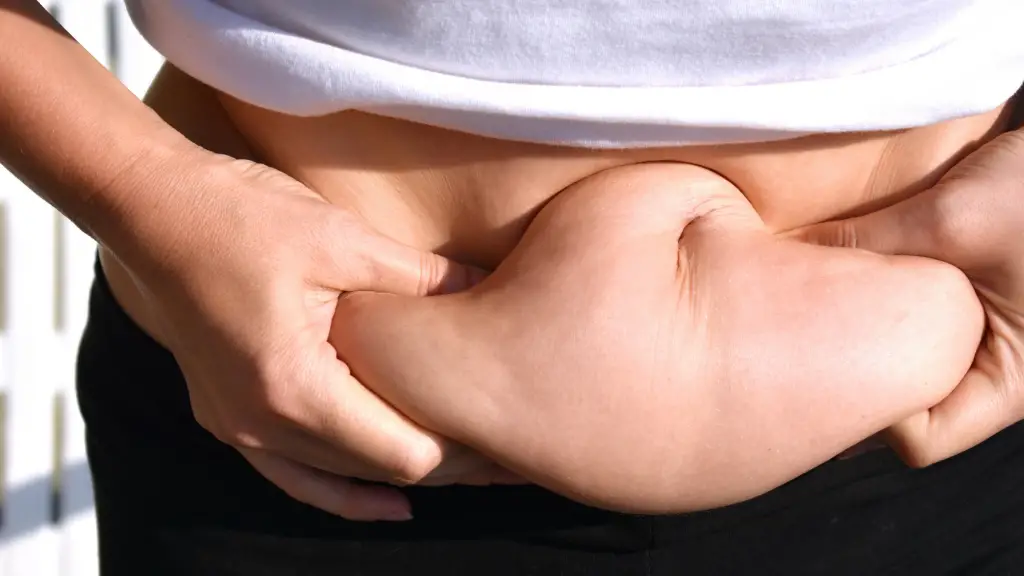
Now, why can’t the belly just go straight back to normal?! What was mother nature thinking when designing the postpartum body??!!
Unfortunately, most women will experience some degree of loose skin after pregnancy. A few unlucky ones are left with an extensive amount of loose skin that will be very hard to get rid of, if ever. Sorry to disappoint. The speed at which you will go back to some sort of normal depends on many factors, such as:
- How much weight you gained during pregnancy.
- Bone structure.
- Genes.
I was lucky enough to have gone back to almost normal after a couple of months. My belly is still a bit looser (I am 8 months postpartum now) than it used to be before pregnancy, but nothing major.
Tips to reduce saggy belly skin after pregnancy
- Eat healthy and drink lots of water. This will help with skin elasticity and for your belly to go back to “normal”.
- Use a Bally Band / Wrap or postpartum compression shorts. These will help with floppy and loose skin and provide light compression to help your uterus shrink.
- Exercise to strengthen the abdominal muscles! There are some very simple, yet very effective, exercises that you can do throughout the day to help the abdominal muscles strengthen and go back to their original place.
I used to exercise throughout the day, even when going out for a walk with Michaela in the pram. And you can start straight away: no need to wait for 6 weeks postpartum.
I was lucky enough to have a free session with a physiotherapist after giving birth. If you don’t get one, I recommend seeing a physiotherapy to show you some exercises.
Below is a useful YouTube clip that you can also refer to. Or you can refer to this useful article with written instructions.
Hair Loss

Now, this one hit me real hard! And I was not expecting this! I was loosing SO much hair after giving birth. My hair was literally everywhere: on the bed, on the couch, on the floor. You name it, my hair was there!
Apparently if you are breastfeeding it’s worse than if you were to bottle feed, due to hormones. It took me about 6 months for the bloody hair loss to reduce. However, if you are lucky, it will only take 4 months 🙂
The good news is, your hair volume will go back to normal very soon, usually by the baby’s first birthday.
You could also try these postpartum hair loss vitamins or have a look at these other tips on how to combat hair loss to slow down the damage!
Acne
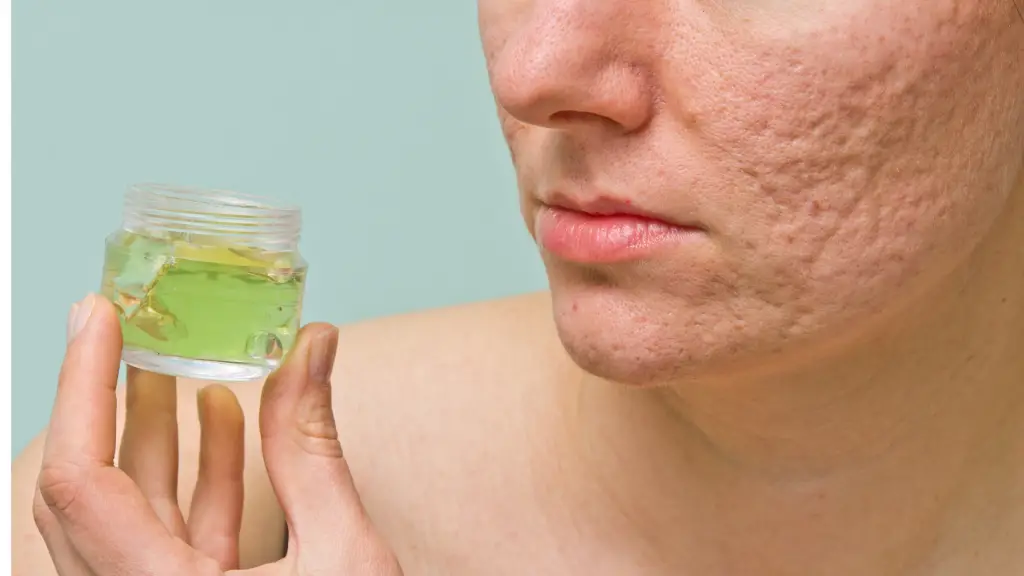
During pregnancy and/or postpartum, acne can flare due to changing hormones. Now, I was lucky enough not to get this one but, if you do, expect the acne to clear 6 to 8 weeks after giving birth. For some it may last longer though.
Here are some tips on how to deal with it: How to treat postpartum acne. And remember to see a dermatologist if quite severe.
Night Sweats
Postpartum sweating is normal and tends to happen more often when you’re sleeping. This is due to the hormonal changes in your body. Bloody hormones again!
Incontinence
During pregnancy and after childbirth, many women experience some degree of incontinence. This is due to weakened pelvic floor muscles, particularly if you had a vaginal delivery.
What you can do to really help strengthen those muscles is do pelvic floor exercises. And start when pregnant, don’t wait until after delivery! They can be done anywhere: I used to do them while driving the car! When pregnant, you can do them as often as you can. After birth, don’t over do it and follow the advice of a physiotherapist if possible.
Here’s a very useful video on pelvic floor exercises to do postpartum.
The Emotional Changes
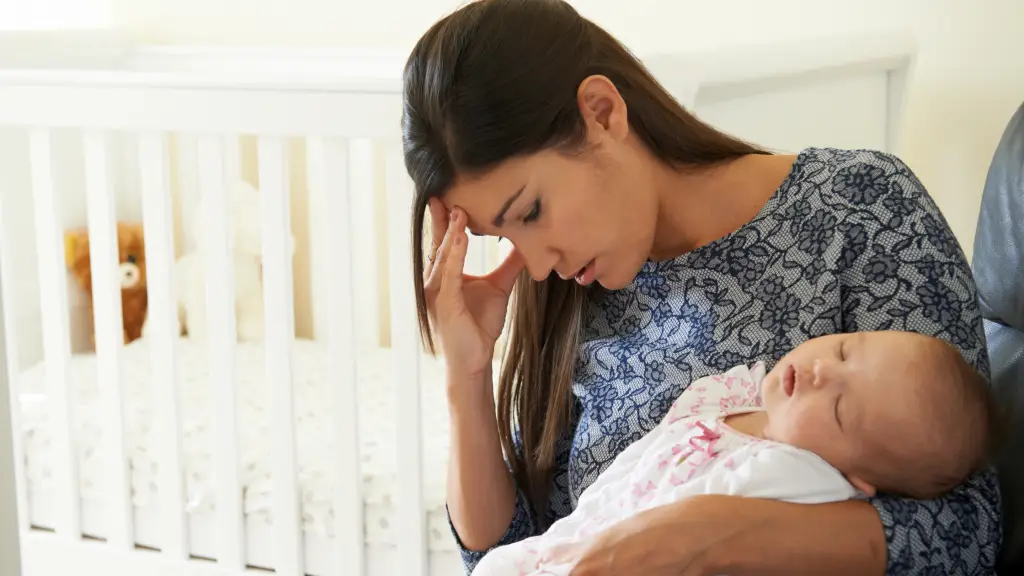
Becoming a mother, particularly for the first time, is a complete life changing experience. In a good way, but it can also feel quite overwhelming. Everything is new, the routine you used to have doesn’t exist anymore, you will be sleep deprived and the physical and hormonal changes sure don’t help.
Emotional changes can range from motherhood imposter syndrome, baby blues to a spectrum of feelings called postpartum mood disorders, and these can be particularly overwhelming for moms over 40.
Related:
Baby Blues
Baby blues are the least severe form of postpartum depression. They start soon after birth and can last for up to two weeks after birth. New moms with baby blues usually feel very sad and tearful for no reason.
If you do experience any of the baby blues symptoms, remind yourself that it’s very common. And don’t beat yourself up. Approximately 70-80% of all new mothers experience some negative feelings or mood swings after the birth of their child.
I think what makes it harder is a sense of guilt. We’ve been waiting for so long to meet our wonderful new baby, to then feel so sad about it all of a sudden. I strongly recommend that you talk to someone if you experience these emotions and challenges. Support from the people you love and/or professionals is the best way to cope with baby blues.
Click here for more information on baby blues.
Postpartum Mood Disorders
If the baby blues feelings don’t go away after two weeks, or get worse, you may have a postpartum mood disorder. Symptoms can begin after giving birth or anytime during the first year. They can be mild, moderate or severe.
I won’t go into too much details here, as I am not a medical processional, but I can say one thing: we experience these when Daniela was born. And the best advises I can give you are:
- It is ok to feel this way after giving birth! It happens to so many women and it is not your fault.
- You are NOT a bad mother for feeling a certain way. “Why can’t I just be happy” doesn’t work here.
- You can get help and it’s treatable!
- Talk about it with family, friends or health professionals! This is the first important step to recovery.
- At the same time, remember that you have the right to ask all the questions you need to ask to a health professional. And you are entitled to a second opinion. We had a bad experience with a psychiatrist that just prescribed medicines with horrible potential side effects, and we wish we had questioned her further before taking the medicine.
Thinking back, I don’t think I was the best support person for my wife when we went through a rough time after Daniela’s birth. I could have done so much better. But I also don’t think I knew any better. Everything was so new and it all happened real fast. So, if your partner can’t be 100% there for you, reach out further. My wife was strong enough to reach out to friends and neighbors as well. And lucky enough to receive the support she needed.
Conclusion
Postpartum is not a walk in the park. I felt totally unprepared for it, and found it way harder than the actual labor and delivery!
For this reason, I think it’s really important to know what to expect and prepare for it. I honestly hope you found the information above helpful and that you can take away some of the tips for a quicker recovery.
For more tips and information on how to survive the first few weeks after birth:
- Best Postpartum Pads (for Bleeding & a Quick Recovery!)
- How to Stay on Top of Chores Postpartum
- 8 Tips for New Parents to Avoid Sleep Deprivation
Did you come across any other postpartum symptoms that is not listed here? Please let me know in the comments below, I’d love to hear from you!
Did you find this helpful? Pin It!


Very informative. I had postpartum and I didn’t know what to do. I feel this article can help so many other moms to know about what to expect after giving birth. Its comforting that all the information from various sites is now collected into one site.
Girl, preach! I loved this and you hit the nail right on the head. These are often things nobody tells you and you just have to navigate blindly through the postpartum period. I myself experienced almost all of these with my first kid, and it was only easier the second time because I sort of knew what to expect. OMG, the pp hair loss, don’t even get me started, lol!